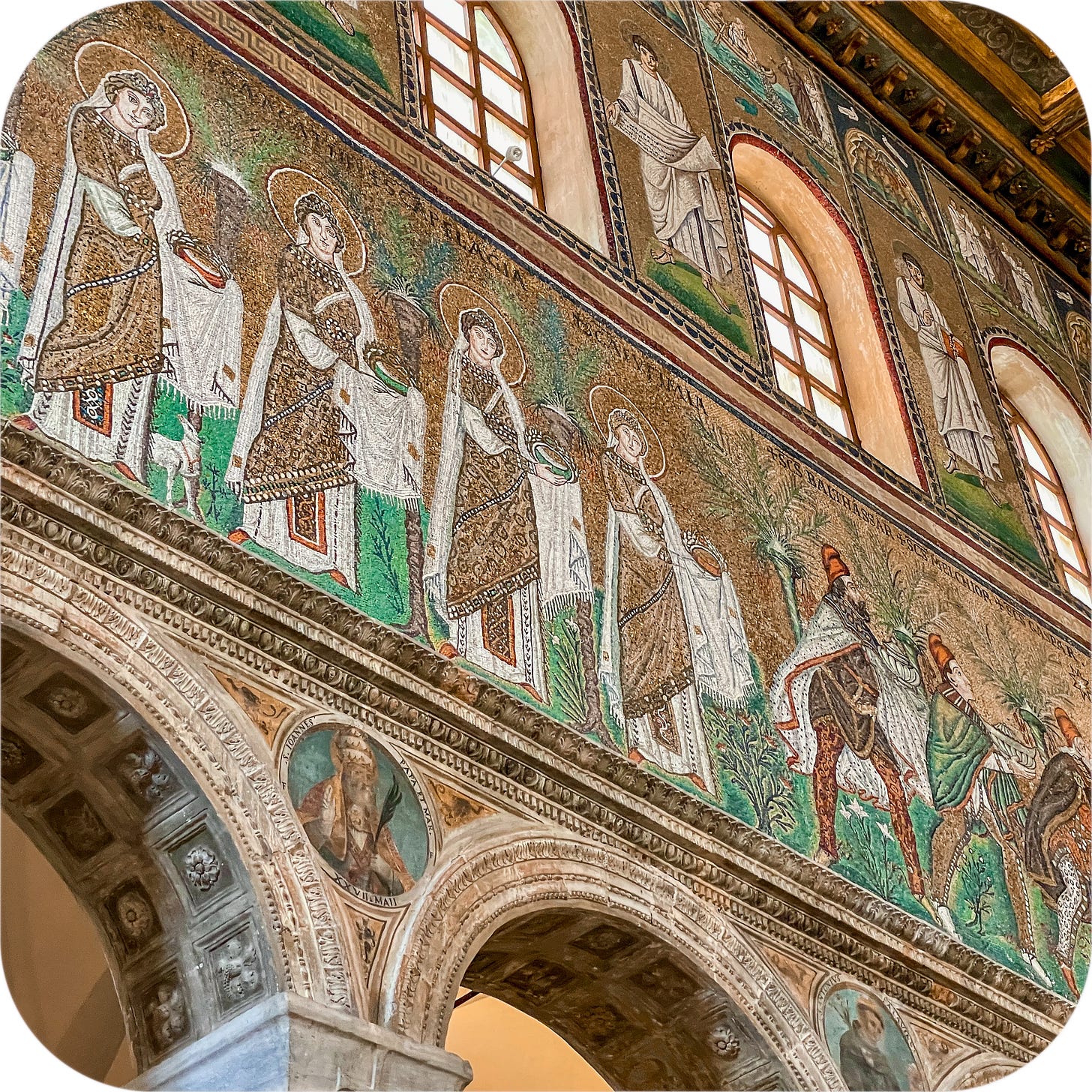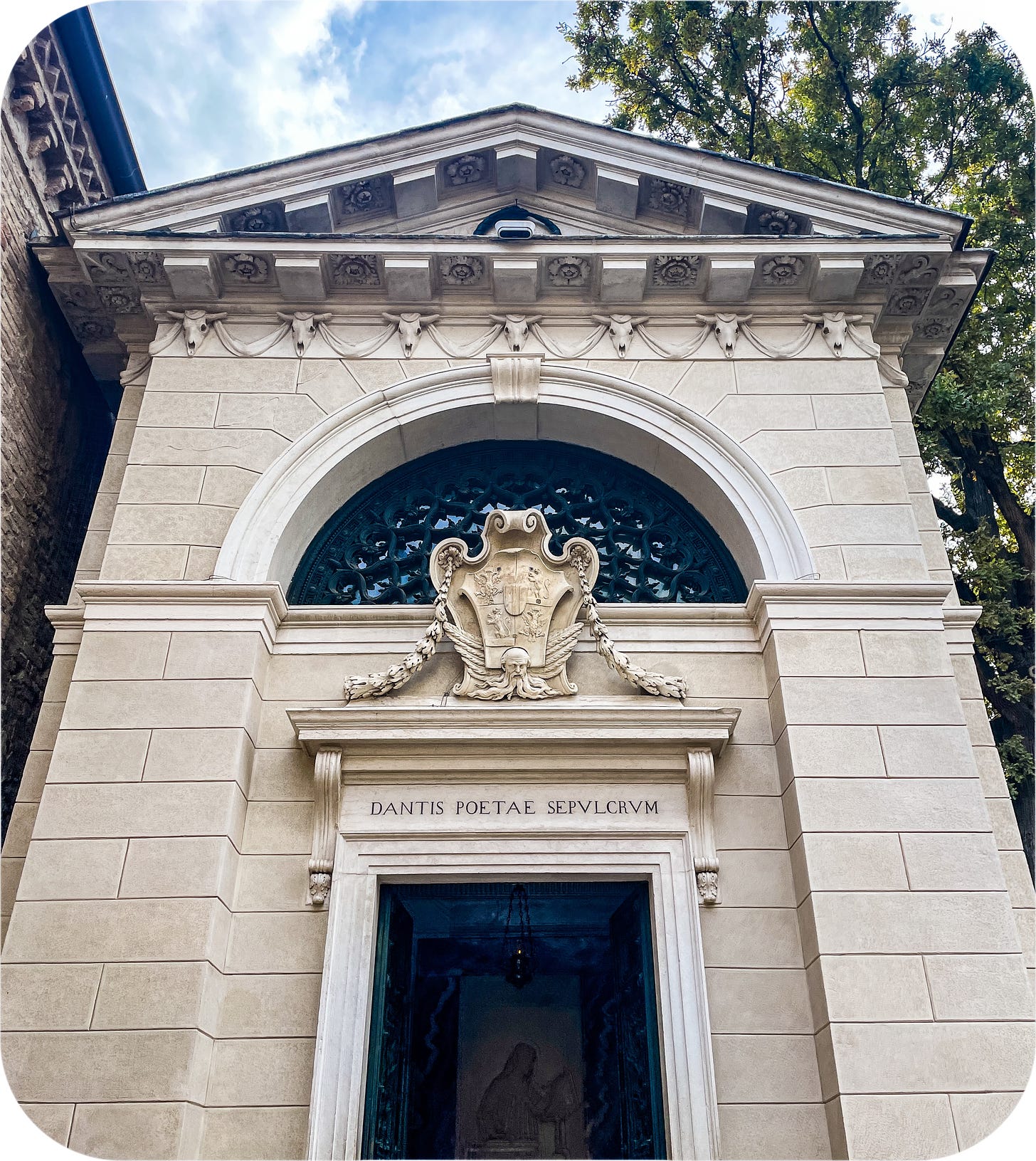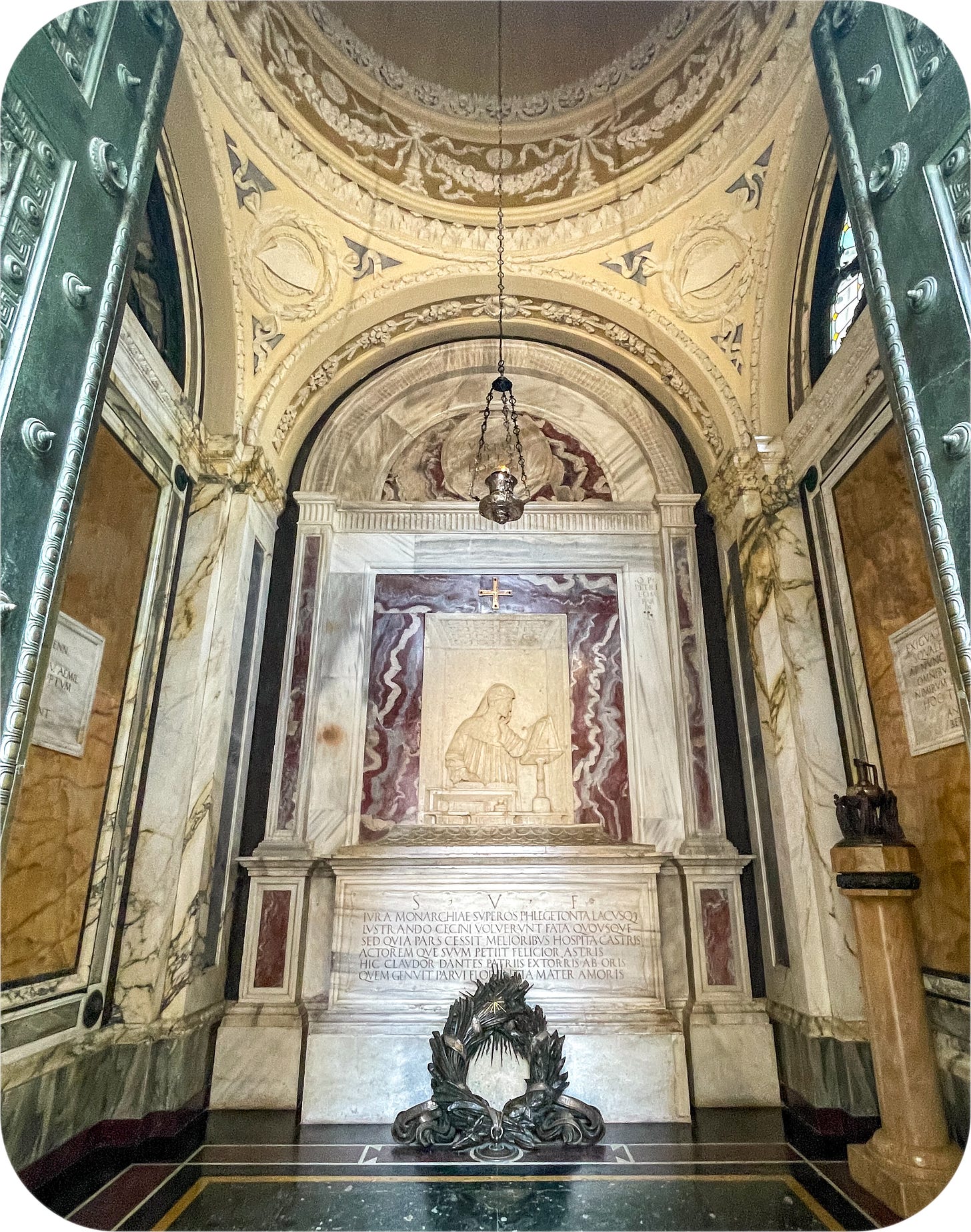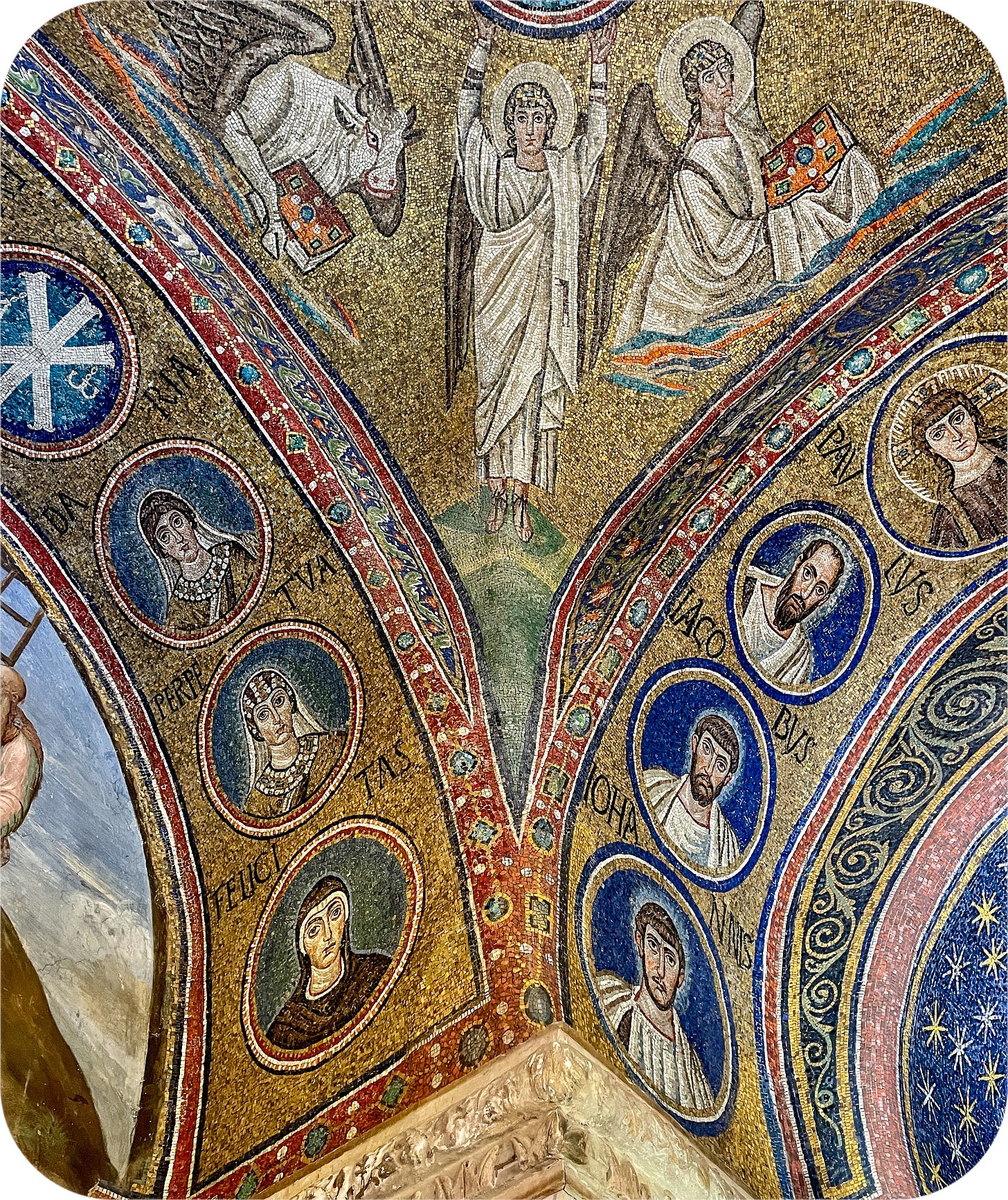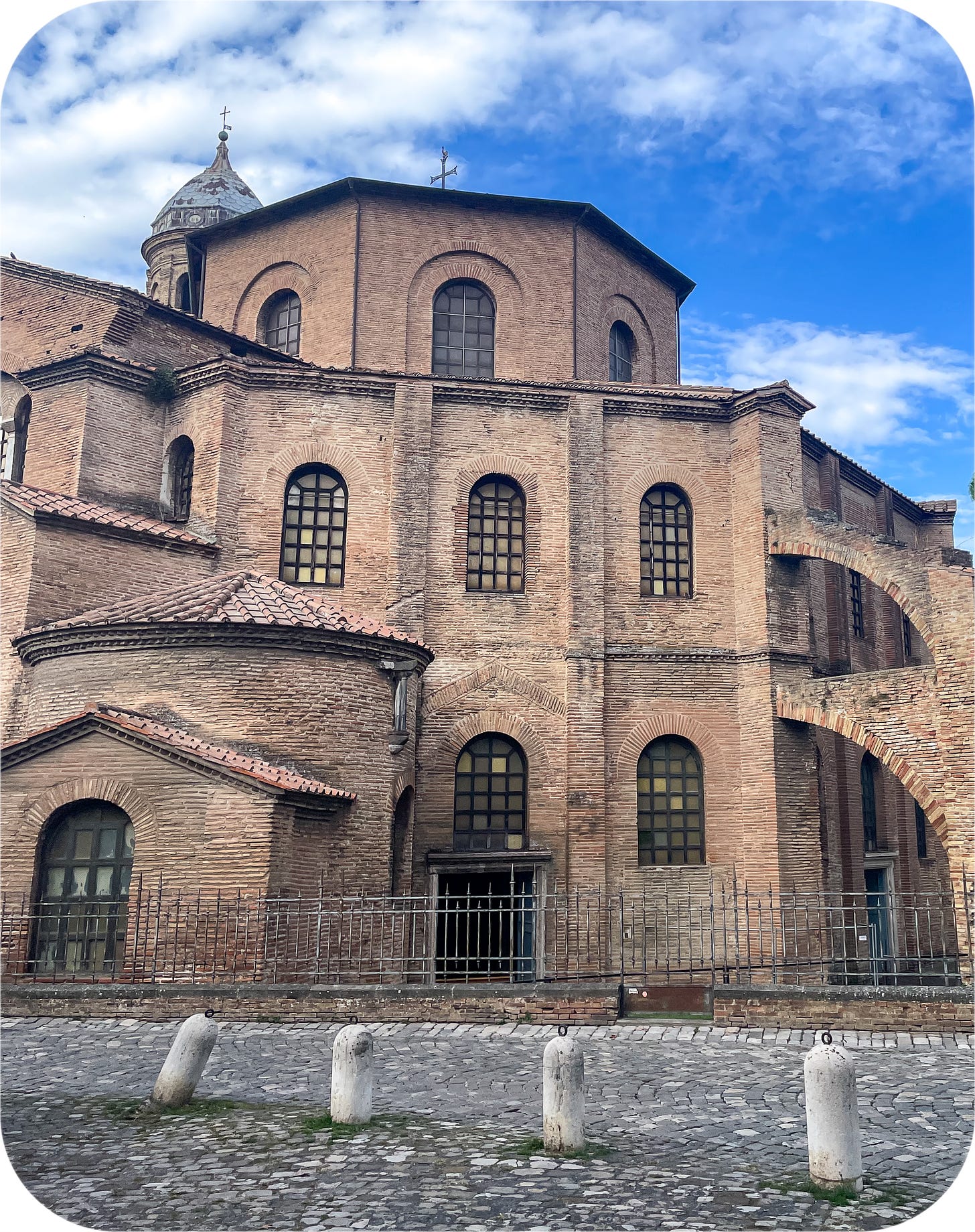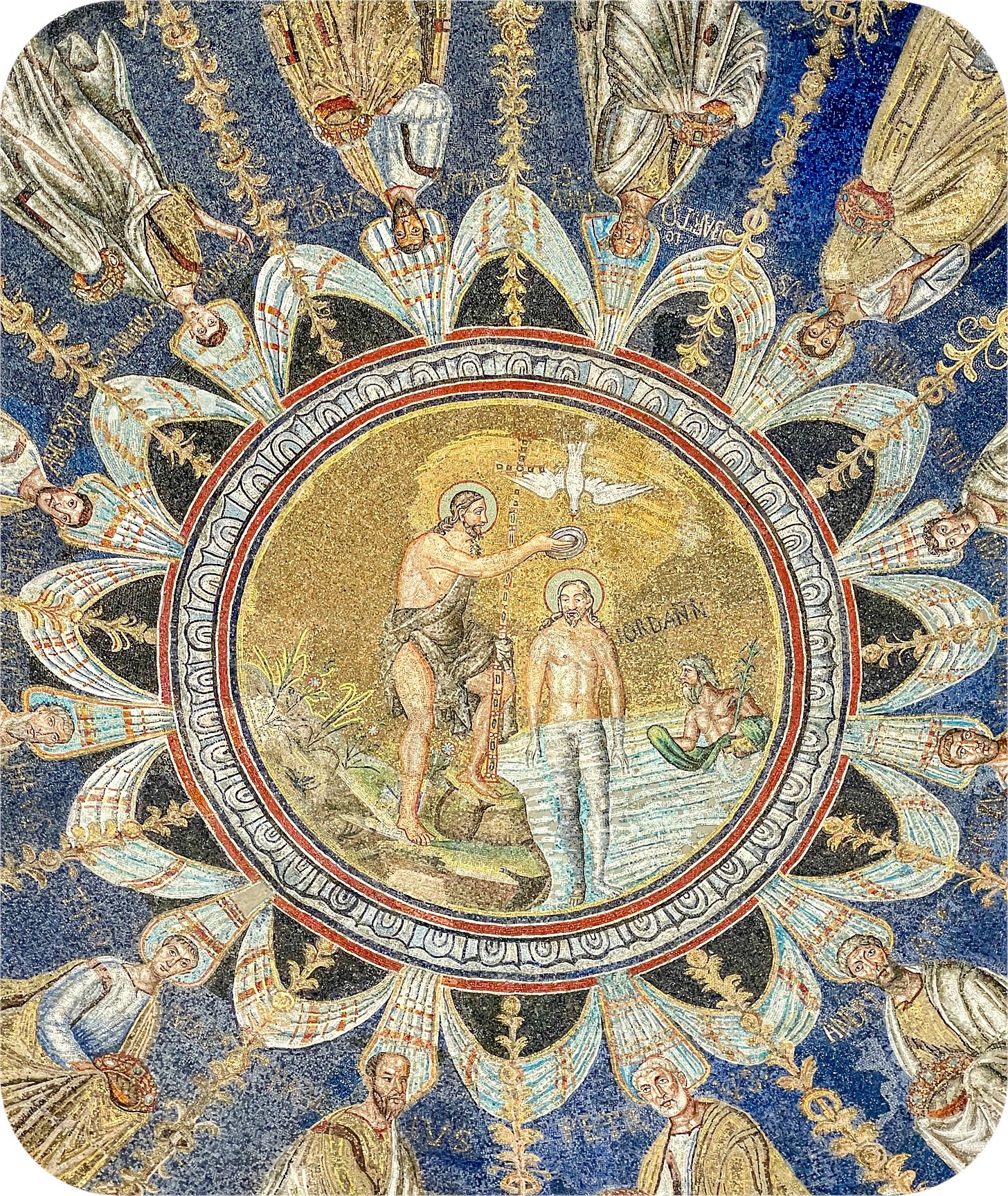The Mosaics of Ravenna
Featuring an all-star cast that includes Dante, Carl Jung & Gustav Klimt...
{Ravenna, Italy}
Dante is kind of a big deal in Italy. He’s kind of a big deal everywhere, I should say, but he’s a really big deal here. As I travel through Italy, I feel somehow like I’m walking in his footsteps. I first wrote about him in Florence, the city of his birth. And then in Verona, the city that first granted him shelter when he was exiled from Florence. And now here I am in Ravenna, the city in which he died and is buried.
And it is here, in Ravenna, that I actually get a sense of just how important Dante is in this country. His bones rest in a tomb in the heart of the city, and the area that encompasses his tomb is closed to traffic for several blocks on each side. Banners wave in the breeze proclaiming that you are in a “zone of silence”. This zone, called Zona Dantesca, or Dante’s Area, was created so that Italy’s greatest writer could spend eternity an oasis of peace and tranquility, buffered from the sounds of the modern city.
(To be honest, it hasn’t all been smooth sailing for the poet’s remains. When he died in 1321, his body was placed in a marble sarcophagus in front of the nearby Basilica of San Francesco. Sometime in the early 1500s, Florence decided that they wanted the poet’s remains returned to the city of his birth, conveniently ignoring the fact that they had exiled him.
Ravenna wasn’t really interested in that option. They placed Dante’s body in hiding, where it stayed - its location known only to church leaders - until the late 18th century, and Napoleon’s invasion of Italy. To protect him from Napoleon’s troops, Church leaders decided to seal Dante’s remains into a box, and hide the box inside of one of the walls of the church. And then it seems like they kind of forgot where they put him.
In 1865, a stone mason accidentally discovered a box in one of the church’s walls, on which was written Dantis Ossa: Dante’s Bones. The remains were moved to the tomb in which they now rest.
An oil lamp burns constantly in the tomb, fueled by olive oil donated once a year by the citizens of Florence. Which seems quite magnanimous of Florence, considering that the Latin inscription on the sarcophagus reads, in part: “Here lies Dante, exiled from his native land, born to Florence, a mother who loved him little”.)
He is such a big deal that I am embarrassed to admit that I have no idea at all that Dante is buried in Ravenna when I step onto the platform at the city’s train station one morning. I have come to Ravenna for one reason alone: to visit what is generally regarded as the greatest collection of early mosaics in the world.
In the 5th century, Ravenna was the capital of the Western Roman Empire. After the fall of the Roman Empire in the west in about 476, Ravenna became the most important Italian outpost of the Byzantine Empire. Today it is home to eight early Christian buildings that together constitute a UNESCO World Heritage Site, seven of which are decorated with glass mosaics that date to the period between 400-600 AD, and six of which are in the historic center of the city: the Basilica of San Vitale, the Mausoleum of Galla Placidia, the Archiepiscopal Chapel, the Neonian Baptistery, the smaller Arian Baptistery and the Basilica of Sant'Apollinare Nuovo.
These days, Ravenna is a mid-sized, unassuming city. So unassuming, in fact, that visitors over the years - from Lord Byron to Gustav Klimt to Carl Jung have shown surprise (and sometimes disappointment) that this former important capital wasn’t a grand city on par with, say, Vienna. The splendors of Ravenna, of course, are behind closed doors.
Keep reading with a 7-day free trial
Subscribe to Beautiful Things: Letters from Abroad to keep reading this post and get 7 days of free access to the full post archives.






